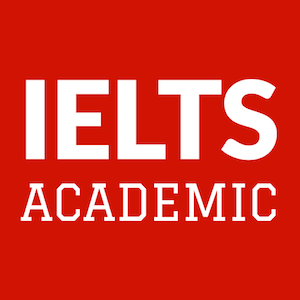IELTS and TOEFL are both accepted by universities around the world* as evidence of English language ability. The two tests appear very similar: they both test four skills, cost around the same, and take around the same amount of time to complete. So you may be wondering: which test, IELTS or TOEFL, is best for me?
While they appear similar, there are in fact several important differences between IELTS and TOEFL. One major difference is the scoring systems. Note how the four skills are weighted differently in this IELTS vs TOEFL score conversion table:
IELTS Vs TOEFL Score Converter
| IELTS Score (All Sections) | TOEFL Score (Overall) | TOEFL Reading | TOEFL Listening | TOEFL Speaking | TOEFL Writing |
| 9.0 | 118-120 | 30 | 30 | 30 | 30 |
| 8.5 | 115-117 | 29 | 29 | 28-29 | 30 |
| 8.0 | 110-114 | 29 | 28 | 26-27 | 30 |
| 7.5 | 102-109 | 27-28 | 27 | 24-25 | 29 |
| 7.0 | 94-101 | 24-26 | 24-26 | 23 | 27-28 |
| 6.5 | 79-93 | 19-23 | 20-23 | 20-22 | 24-26 |
| 6.0 | 60-78 | 13-18 | 12-19 | 18-19 | 21-23 |
| 5.5 | 46-59 | 8-12 | 7-11 | 16-17 | 18-20 |
| 5.0 | 35-45 | 4-7 | 4-6 | 14-15 | 14-17 |
| 4.5 | 32-34 | 3 | 3 | 12-13 | 12-13 |
| 0-4 | 0-31 | 0-2 | 0-2 | 0-11 | 0-11 |
Source: ETS
The differences don’t stop there. Here are five more important distinctions between IELTS and TOEFL. As you read on, you may start to get a better idea of which test is better suited to you.
IELTS includes a variety of Englishes; TOEFL is a test of Standard American English
In the Listening section of IELTS, you will hear British regional accents and other varieties such as American and Australian English. Not only accents but idioms and colloquial expressions will be more diverse. TOEFL, meanwhile, tends to feature only American English. Your past experiences with English will guide you here. But remember, this only applies to Listening tasks. In the Speaking and Writing sections of both TOEFL and IELTS, you can use British English or American English spelling and pronunciation.
IELTS is a human test; TOEFL is a computer-based test
This is the single most important distinction when comparing IELTS vs TOEFL. The Speaking section of IELTS is a face-to-face interview so you can ask the interviewer for help. In TOEFL, you must follow the instructions of a computer and you cannot receive help. Do you prefer interacting with another person? If so, choose IELTS. Do you perform well in solitary, computer-based tasks? If so, you may prefer TOEFL. Also, while IELTS Writing requires you to write your answers by hand, in the TOEFL test you type your answers into a computer.
IELTS separates the four skills; TOEFL integrates the four skills
TOEFL features integrated tasks which require you to read, listen, take notes, and then write or say your answer. IELTS does not include such tasks. In IELTS, the writing section is clearly a test of writing, the speaking test is clearly a test of speaking, and so on. If multitasking is not your biggest strength, you may find IELTS easier.
IELTS includes a variety of questions; TOEFL is multiple-choice
The questions in TOEFL Listening and Reading tend to be multiple-choice and quite straightforward. By contrast, the questions in IELTS Listening and Reading consist of a variety of tasks such as completing sentences, tables, and summaries. On balance, it might be said that TOEFL is easier in Listening and Reading, but IELTS is easier in Writing and Speaking. Unfortunately, we don’t know of any schools that allow you to submit a combined IELTS/TOEFL score!
IELTS is a test of English; TOEFL is not just a test of English
Your IELTS score is an excellent indicator of your English ability: to get a good IELTS score requires strong vocabulary, grammar, spelling, and pronunciation skills. However, your TOEFL score also measures skills that are not technically linguistic. These include making notes during a lecture, guessing a speaker’s intent, synthesising information from different sources, and producing a logical argument. For that reason, most people find TOEFL to be slightly more difficult than IELTS.
IELTS Vs TOEFL: Which test would a native speaker take?
 From a native speaker’s point of view, TOEFL is more difficult because it tests a wider variety of skills including synthesising information from different sources. IELTS is a truer test of English and has distinct advantages, such as a real person to interact with in the Speaking section. As an IELTS teacher, of course I am biased, but I recommend IELTS to my students who have previously taken TOEFL and almost all are happy they have made the switch.
From a native speaker’s point of view, TOEFL is more difficult because it tests a wider variety of skills including synthesising information from different sources. IELTS is a truer test of English and has distinct advantages, such as a real person to interact with in the Speaking section. As an IELTS teacher, of course I am biased, but I recommend IELTS to my students who have previously taken TOEFL and almost all are happy they have made the switch.
*As of 2014, the UK Government was no longer accepting TOEFL for student visa applications.








